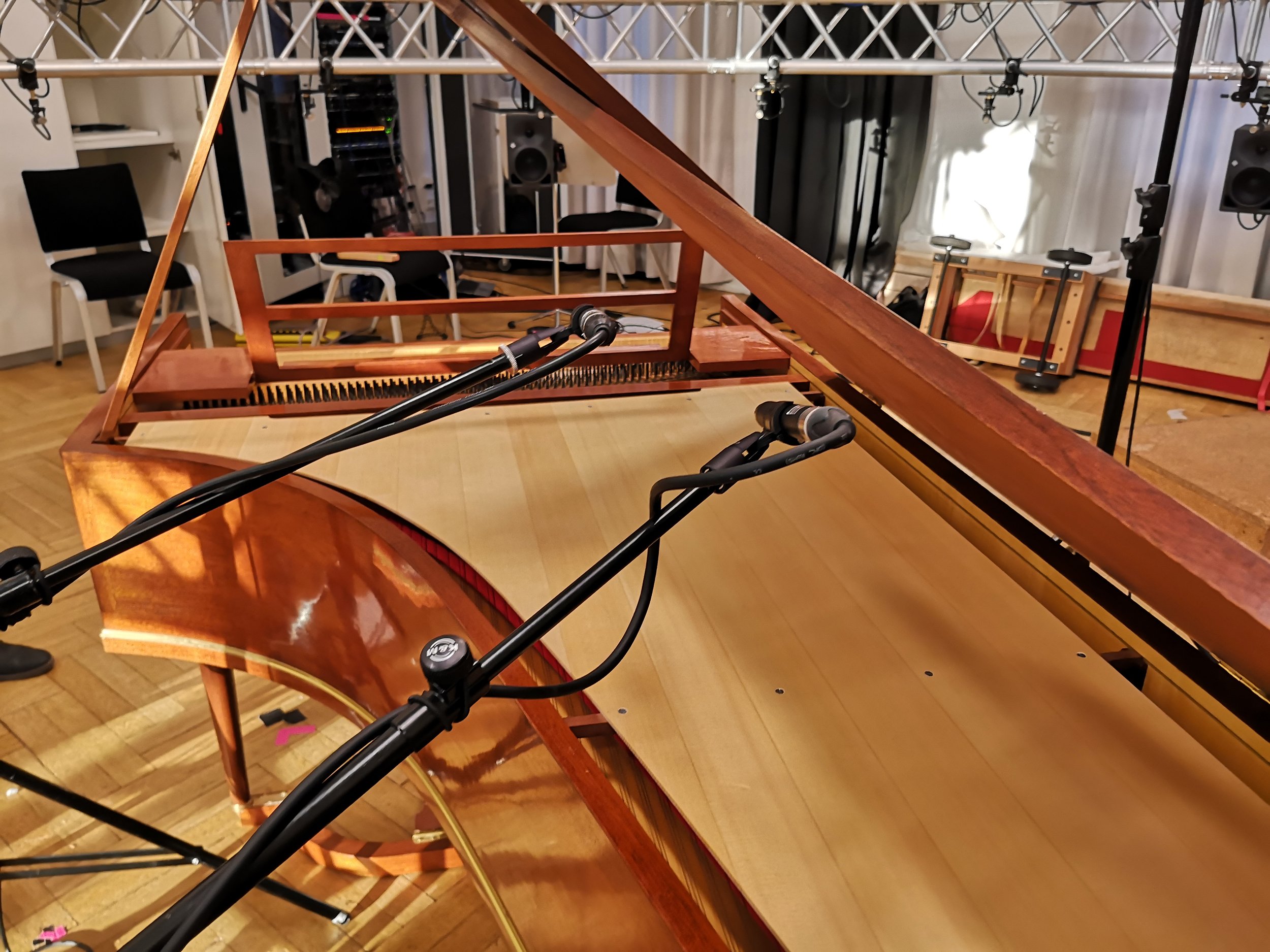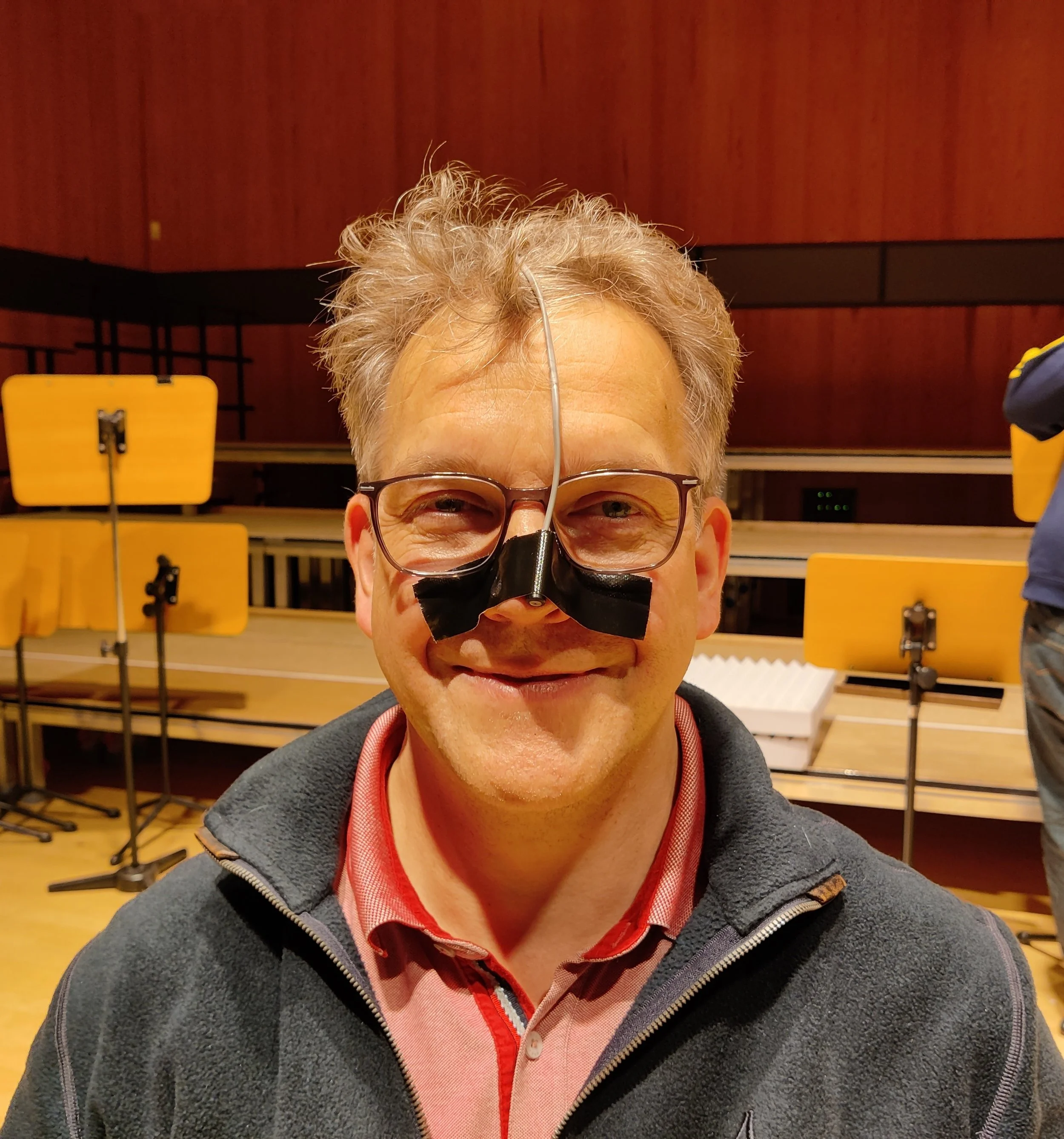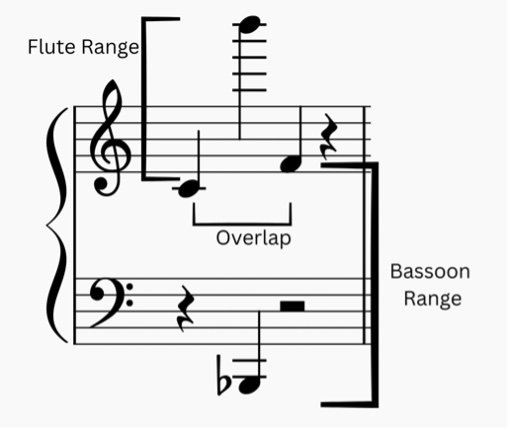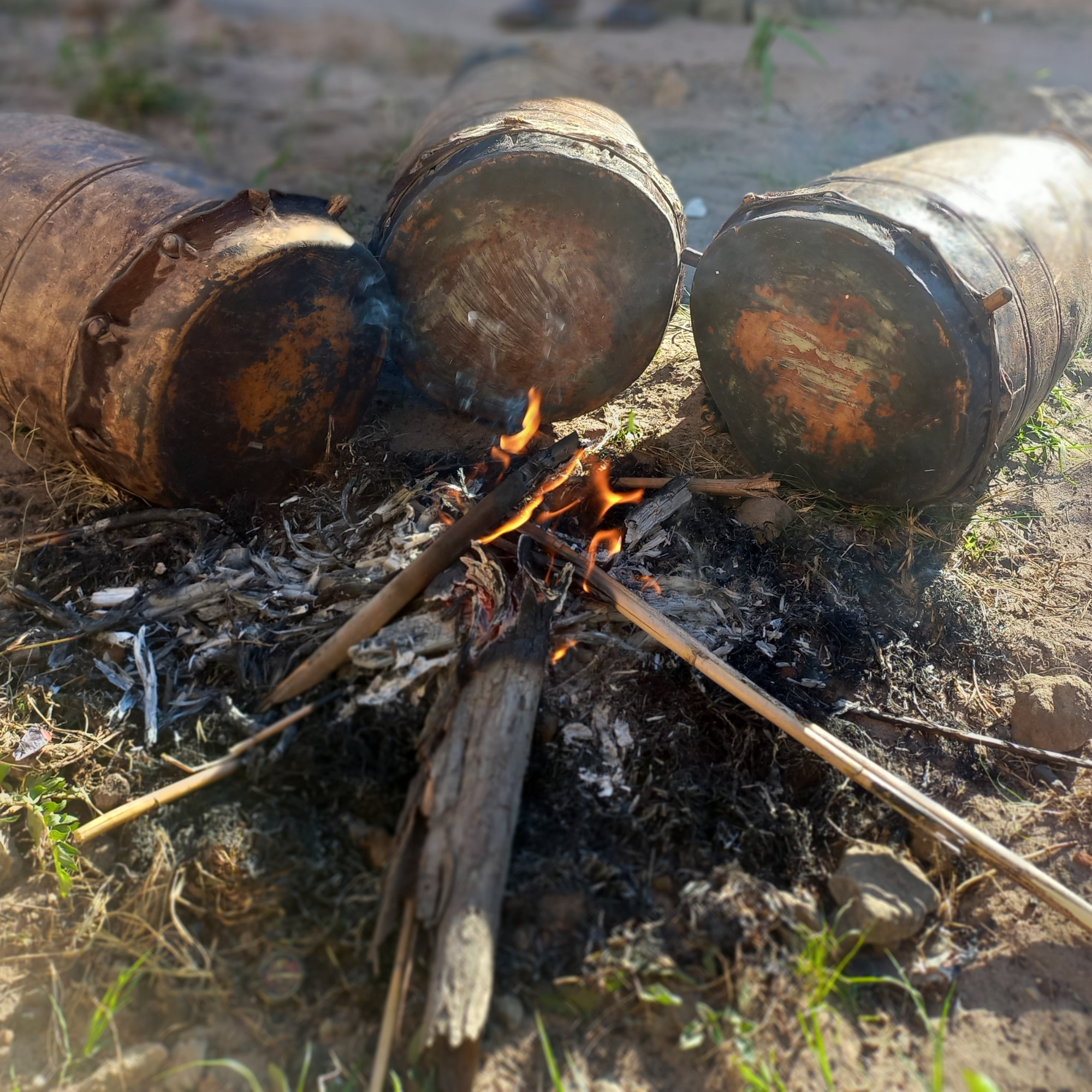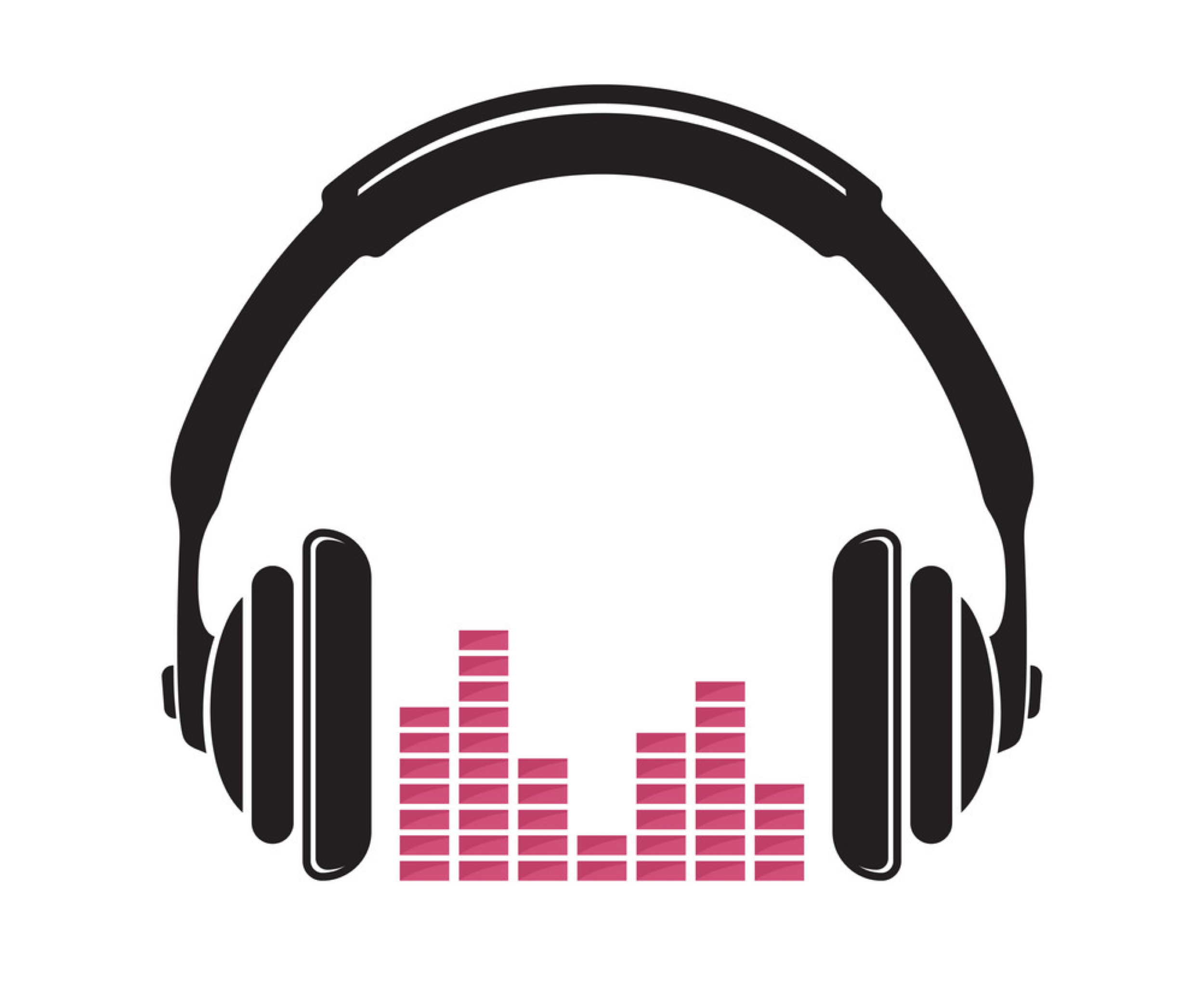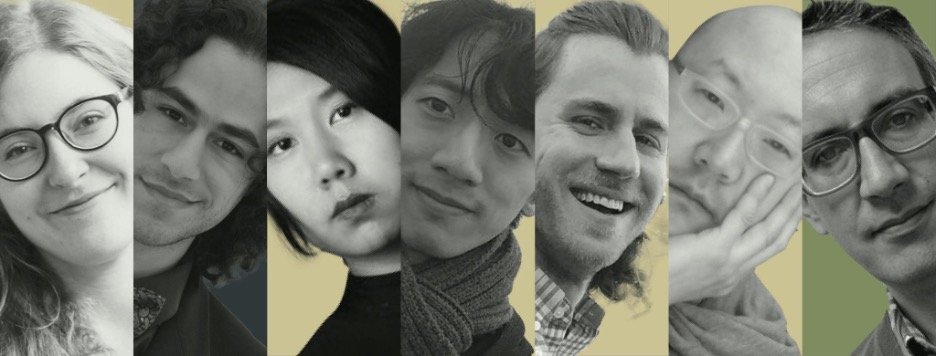Research Reports
Detailed accounts of ACTOR-Project-funded research projects, workshops, and collaborations focused on timbre and orchestration, highlighting methodologies, findings, and potential implications for the field.
This report presents the fourth ODESSA recording session, which involves a string ensemble performing selected musical excerpts under controlled acoustic conditions. The study aims to analyze the artistic and acoustic factors contributing to musical blending, incorporating room acoustic variations and ensemble performance attributes.
Evoking the human voice through instrumental music has been a perennial goal for composers, appearing in traditional and historical performance instructions such as cantabile and contemporary practices such as formant modeling (e.g., Jonathan Harvey, Speakings, 2008; Peter Ablinger, Deus Cantando, 2009). Performers also make extensive use of vocal metaphors in their discourse (Healy, 2018). But do general listeners perceive instrumental music in terms of vocal qualities or metaphors? Here we address this question by asking listeners to rate their perceptions of vocality in music intended to emulate it. Listeners provided real-time continuous slider data indicating how “voice-like” they perceived our repertoire excerpts to be. These excerpts included contemporary vocal mimesis techniques, traditional approaches to vocality, and control stimuli (i.e., music that is materially similar to the memetic excerpts but not explicitly intended to evoke the voice). This study provides perceptual validation for a phenomenon that has been important to musicians for centuries. Based on these findings, a new composition by Louis Goldford has been commissioned and is currently in development, incorporating the vocality features identified in our analysis. Although the composition has not yet been performed, it represents a future application of our methodology within a creative practice.
This module documents an ACTOR research-creation project bringing together six composers with the musicians of the Quasar Saxophone Quartet for a yearlong series of meetings and workshops culminating in a concert on May 9, 2024, “Vacillations harmoniques en six tableaux / Harmonic vacillations in six pictures.” The project, organized by ACTOR members Andrés Gutiérrez Martínez and Robert Hasegawa, featured six McGill-affiliated composers (Andrés Gutiérrez Martínez, Chelsea Komschlies, Anita Pari, Lila Quillin, Jonas Regnier, Louis-Michel Tougas) with research assistance from saxophonists Tommy Davis and Kirby Leitz and the inexhaustible dedication and generosity of the members of the Quasar Saxophone Quartet: Marie-Chantal Leclair (soprano saxophone), Mathieu Leclair (alto saxophone), André Leroux (tenor saxophone), and Jean-Marc Bouchard (baritone saxophone).
The general objective of this project was to conduct research on speech as a timbre model for orchestration. Drawing from computer analysis of speech, we aimed at exploring how two different languages and their acoustic properties could serve as compositional models. These models can be seen from two perspectives, the first one being the generation of musical material based on phonetic sound structures, and the second one the organization of this material according to rules analogous to those found in natural languages.
By participating in the first session of the ACTOR Project’s Contemporary Orchestration Research Ensemble (CORE), I composed a short work for a heterogenous chamber quartet that included a violin, a bass clarinet, a vibraphone and a trombone. These instruments had been pre-selected by ACTOR researchers to observe and compare how their particularities would be exploited by various composers throughout several academic institutions. In my case, the chosen approach was to present specific timbral approaches or effects in successive sections or blocks, sometimes in a very literal manner, all of which were based on a short melodic phrase which was developed prior to the composing phase in a series of experimentation sessions with the performers. As the project evolved it became apparent that a strategy of juxtaposed stylistic references was being used to present very clear and contrasted elements. This approach ultimately determined the composition’s general structure. This text presents the process that led to this composition’s production, discusses its objectives and succinctly presents its different segments. It attempts to describe how timbral strategies can have a determinative effect on the construction of a work, particularly in the context of a research-creation project.
Le projet "Petites pièces géométriques" – financé par ACTOR en 2021 dans le cadre des projets de recherche-création - représente une intersection innovante entre l'art sonore, la musique électronique et l'acoustique spatiale, développé à la Haute École de Musique de Genève sous la direction de Gilbert Nouno. Cette initiative de recherche et de création a exploré comment les espaces physiques peuvent devenir des éléments intégraux de la composition musicale grâce à l'utilisation d'une technologie expérimentale et spécialisée de projection ultrasonique.
In the crucial decades of the development of the piano at the start of the 19th century, essential musical questions centered on sonic and performative nuances embodied in the contrast between different school of piano building in Vienna and Paris. For this ACTOR funded research project realized at the end of May 2022 at the Hochschule für Musik Detmold, two replicas of historical keyboard instruments that Beethoven employed to compose some of his major piano works are being contrasted. Replicas of an 1803 French Erard Frères piano and a ca. 1800 Viennese Walter piano were alternately played by historical performer and researcher Tom Beghin. A multitrack immersive sound recording captured the most characteristic sounds of both instruments in the close and mid-range. Simultaneously acoustical recordings and measurements were realized to analyze the origin of the sound waves in different distances. Perceptual analysis of the microphone signals in comparison with the acoustical data collected as well as materials from a pilot project served to describe in detail the timbral characteristics. The evaluation of all the recorded audio takes as well as acoustical investigations of the timbre, directivity, and the effect of the second sound board of the Erard are ongoing. Educational audio materials have been developed.
The composition of sound is a complex process that requires the implementation of numerous strategies and circumstances to achieve a successful outcome. Each musical work is the result of countless preliminary stages, prerequisites, and chance occurrences. The complexity of creation cannot be easily reduced, and the development of specific concepts for the direct experimentation with sound is necessary to navigate through the vast array of creative approaches found in the contemporary instrumental and electroacoustic repertoire. The gestation of a musical work is a mysterious process that surpasses our understanding. Working directly with sound allows us to follow a portion of this process, whether it begins with an idea seeking a sound to materialize or with a "found" sound emerging from an unexpected accident.
The following essay and derived sonic system were produced by Victor Burton through a collaborative interinstitutional effort with Jeremy Tatar, supported by the Analysis, Creation, and Teaching of Orchestration (ACTOR) project in Montréal. An excerpt of the text, intertwined with the first sonic system, was presented remotely at the Y6 ACTOR Symposium held in summer of 2024 at the University of British Columbia in Vancouver, Canada. A subsequent lecture also paired with the presented system was performed live in Berlin at Cashmere Radio in July 2024.
Accurately capturing individual sound sources when recording a multi-musician performance requires a crucial balance between obtaining “acoustically clean” signals from each instrument and preserving musicians' visual and auditory feedback from co-performers and the room acoustic environment. This balance is crucial for research on orchestral and ensemble sound, particularly in studies on musical blending between instruments in ecological conditions, as well as applications in virtual reality orchestra simulations and music recording techniques.
The acoustic characteristics of a performance space significantly influences musicians' auditory experience, influencing the ability to interact and synchronize within an ensemble. Understanding how room acoustics affect musical performance is crucial for optimizing acoustic attributes of performance spaces, and supporting musicians in various performance settings. This study explores how changes in room acoustic conditions impact musicians’ awareness and perception of their surroundings, with a particular focus on ensemble performance. To achieve this, we employ virtual acoustics, a technique that allows precise manipulation of room acoustic properties through the process of auralization. By systematically adjusting acoustic characteristics of performance space, this pilot study aims to assess musicians' sensitivity to environmental changes, determine preferred acoustic conditions, and investigate the role of acoustic feedback in performance. Through this approach, it seeks to offer insights into the perceptual and cognitive effects of varying acoustic conditions on ensemble performance and musical blending.
Accurately capturing individual sound sources when recording a multi-musician performance requires a crucial balance between obtaining “acoustically clean” signals from each instrument and preserving musicians' visual and auditory feedback from co-performers and the room acoustic environment. This balance is crucial for research on orchestral and ensemble sound, particularly in studies on musical blending between instruments in ecological conditions, as well as applications in virtual reality orchestra simulations and music recording techniques.
The Real-time Timbral Analysis for Musical and Visual Augmentation project explores the potential of real-time machine learning (ML) techniques to create dynamic visuals in the context of musical improvisation and composition. This artistic research aims to enable musicians to interact with visuals that respond directly to their performance, thereby guiding listeners' perception through visual representations of changes in timbre and spectrum. The project incorporates software tools such as sp.tools, FluCoMa, Max MSP, and TouchDesigner to achieve real-time instrumental augmentation for musicians, offering a unique way to visualize musical parameters.
In this study, the authors aimed to fill a crucial gap in timbre research regarding the variation and range in timbre within an instrument and its corresponding semantic associations. These variations depend on dynamics, pitch, articulation, duration, vibrato, technique, and other parameters.
As an ensemble of four instruments from the same family, the quartet has an exceptional capacity for blending but can also sharply differentiate the timbres of its members when desired. As an uncoducted ensemble, the string quartet depends on close non-cerbal communication between its members, and quartet members are accustomed to making subtle variations in their playing to achieve timbral and orchestrational ends. The purpose of this project is to explore how composers can orchestrate for the string quartet, examining strategies for timbral blend, stratification, modulation, and contrast.
“Timbrenauts” is a cross-institutional collaborative student research-creation project. We employed experimental designs from timbre perception research to generate data models that will inform the creation of new musical compositions for an atypical instrumental duo of cello and trombone, while leveraging extended techniques rarely explored in traditional musical repertoire. In this TOR module, we discuss our motivations, data collection process, similarity judgment experiment, and the resulting data we want musicians to use as a basis for their creative output.
The primary objective of the Space As Timbre (SAT) project is to conduct meticulous experiments on orchestration solutions and playing techniques, to achieve timbral effects that closely approximate the perceptual characteristics of diverse acoustical spaces. To this end, SAT endeavors to illuminate the intricate interplay between the spectral content of a sound, its resynthesis through orchestration, and the resulting perception of the quality of the acoustical space where the sound seems to have been produced.
How do Luvale musicians tune their drums with heat and tuning paste? How does this tuning process change a drum’s timbre? How do practitioners describe these timbres? And what acoustic properties are encoded in these semantic, descriptive terms? In this collaborative and interdisciplinary module, we address these questions through the case study of a two-step tuning process among Luvale drummers in Zambia.
This module offers a streamlined resource for emerging composers seeking to introduce live electronics into their instrumental orchestration practice. Accessible and user-friendly software and hardware platforms offer a pathway for emerging or (technologically curious expert) composers to experiment with electronics in a low risk, low-cost context.
This project spurred the development of an internet-based guide for musicians that describes, in layperson terms, the fundamentals of acoustic features of musical instruments, stages, and performance/rehearsal rooms using visual and auditory examples. The guide also aims to explain what and how parameters can be assessed along with the audio recordings to document a musical performance.
The DaTE project investigated the use of dance tracking to control electroacoustic processing of acoustic timbres. To this end, the project involved a composer/ programmer, a dancer, a flautist, and a cellist, and used the UBC-developed Kinect Controlled Artistic Sensing System (KiCASS) to track the dancer and generate movement/position data. T
This project analyzes the understudied parameters of timbre and texture and their interactions with musical form in a new popular-music corpus, Timbre in Popular Song (TiPS). This study addresses two problems in popular-music scholarship: lack of research on timbre and texture, and underrepresentation of non-male and non-white artists in both popular music and its scholarship.
In late August of 2022, the rich sonority of the historical Chapelle du Grand Séminaire de Montréal presented the acoustical canvas for a multifaceted choral recording and research project. Under the baton of Andrew Gray, Montreal choir Voces Boreales performed Joby Talbot’s Path of Miracles for mixed chorus (2005) and percussion, a musical pilgrimage for 17 voices, inspired by the millennial Camino de Santiago de Compostela.
The purpose of the Musician’s Auditory Perception (MAP) project is to collect qualitative data via sonic ethnography in order to promote and analyze, both literally and metaphorically, (a) sonic collaboration between auditory learners, (b) modes of sound information gathering, and (c) the creative expression of musicians, while disrupting common pedagogic methods that reinforce hierarchical education practices.
"Masque de fer" (Iron Mask) is a module for exploring extended techniques on the drum kit, created by Gabriel Couturier and Martin Daigle who were awarded the ACTOR Project’s Collaborative Student Project Grant. The recording session generated an open-access extended technique resource that includes a stereo mix, the entire recording session, and the stems in 96 kHz or in 48 kHz. This session was filmed from the first-person point of view to allow researchers and composers to step into the world of the drum kit performer. This tool will allow composers to familiarize themselves with the sound possibilities which are presented in the research.
Composers make use of their knowledge of different orchestration techniques in creating certain effects and sonic outcomes. These effects may be comprehended by listeners to a greater or lesser extent depending on the amount of shared understanding with the musical tradition, style of music, and other factors. In this project, we look at how the success of these effects depends on both prior knowledge and experience, and how they are perceivable by listeners. Successful orchestration is built upon the fact that regardless of the instruments used or the musical or cultural connotations of the music, they adhere to universal mechanisms of auditory perception and cognition.







